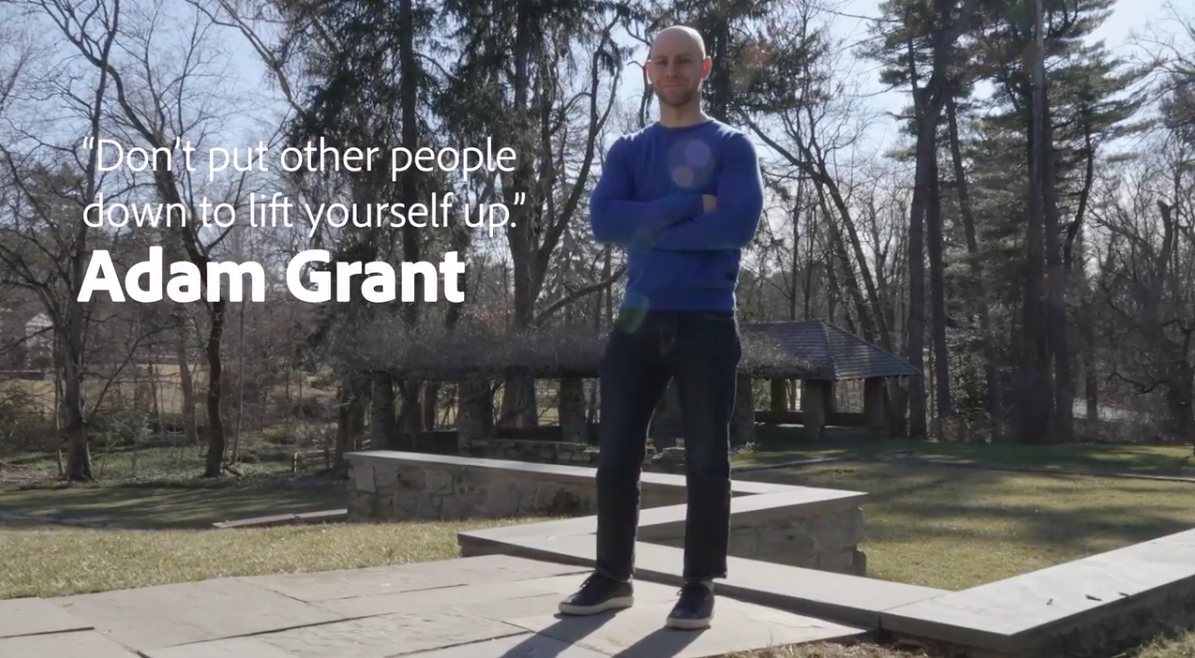I’m about to say the quiet stuff out loud: “Modern marketing” has meant marketers accepting that sometimes, we couldn’t get “there” from “here.” We have had to sacrifice our mojo in the name of modernization—sacrifice that secret sauce that turns wildly creative moments into monetization.
For those open to hearing it, an interesting thread emerged during this year’s Adobe Summit (summit.adobe.com): Marketing is actively reclaiming its mojo. And make no mistake, integration is at the center of getting our groove back.
In Adam Grant’s main stage session discussing organizational psychology and the dynamics of a team, he explained that when you get a “room of smart people together,” instead of coming together to make the room smarter, individuals spent time proving they were THE SMARTEST of the smart. To quote Grant, “often, the whole was less than the sum of its parts.” He went on to share that failed… anything…wasn’t because of a lack of smart people thinking smart things. Rather, failure was the byproduct of not RE-thinking fast enough.
 This resonated with me as a marketer…profoundly. I’ve BEEN IN that smart room watching the smartness wars demolish the best strategies and best intentions. But I’ve also understood that we marketers were forced to rethink everything in the earliest days of the global COVID-19 pandemic. We needed to quickly see the writing on the walls that something massive, disruptive and devastating could be on the way. We started to run…and being the smartest in the room didn’t matter as much as being able to be the most connected and most aligned across the organization.
This resonated with me as a marketer…profoundly. I’ve BEEN IN that smart room watching the smartness wars demolish the best strategies and best intentions. But I’ve also understood that we marketers were forced to rethink everything in the earliest days of the global COVID-19 pandemic. We needed to quickly see the writing on the walls that something massive, disruptive and devastating could be on the way. We started to run…and being the smartest in the room didn’t matter as much as being able to be the most connected and most aligned across the organization.
Smart was nice. But smart didn’t save opportunities, recovery or growth. Smart was a bonus. Integrated was a requirement. Integrations, from teams to technologies helped us survive…and it will be integrations that will help marketing to continue to thrive and disrupt the status quo.
If there is anything that Adobe Summit 2022 showed us is that integration is the path forward for marketing. Be it integration between systems, channels, data and applications or integration across teams, people and partners, the biggest opportunities will realized and optimized thanks to collaboration, connection and integration.
Integration has taken center stage. Don’t believe me? Let’s break down three of the big Summit announcements that immediately caught my eye:
- New unified workflows between Adobe Workfront, Adobe Creative Cloud Enterprise, and Adobe Experience Manager integrate teams along the pathways of how the work of engagement gets done. This isn’t just integrating the work of approvals or collaboration, but fundamentally integrating along the continuum of storytelling and how that work forms the cornerstone of durable, profitable customer relationships.
- Data integrations align the speed of the customer with the speed of personalization as Adobe Real-Time CDP and Adobe Target come together. It is one thing to aggregate and normalize data, it is another to fully integrate fundamentally different intentnions behind data sets to craft a more holistic view of the intersection between customer, opportunity and brands. By bringing Adobe Target and Real-Time CDP together, the intentions of growth via precise delivery meets the opportunity of growth via precise personalization and contextual content.
- Integration took center stage again through key partnership announcements including commerce-centric partnerships with Walmart, FedEx and PayPal to expand a customer’s control of their buying, paying and delivery journey. Yet another partnership integration, with IBM’s The Weather Channel business, integrates a new layer of contextual intelligence bringing weather, climate and environmental contextualization to personalization.
Each announcement focused on the integration to facilitate and accelerate the work being done. Each focused on expanding the ecosystem of work to embrace the customer by ingesting the behavioral and contextual signals most directly impacting how their consumption of engagements could be shifted thanks to a more personal approach.
(Side note: There were a TON of announcements from enhancements and expansions of Adobe Sensei, Adobe’s AI, to the introduction of Adobe Experience Cloud for Healthcare and Adobe’s new cloud-based digital learning platform, Adobe Learning Manager. Check out this Adobe news announcement for a round up: https://news.adobe.com/news/news-details/2022/Adobe-Summit-2022-Make-the-Digital-Economy-Personal/default.aspx)
That isn’t to say there wasn’t plenty of that future-forward aspirational dreaming Adobe Summit is known for. This year, it wasn’t just announcements of cross-cloud integration demonstrating that connection between Creative, Experience and Document clouds…it was hearing from Scott Belsky, the Chief Product Officer and EVP of Creative Cloud sharing Adobe’s vision of the metaverse.
 Shared immersive experiences visualized in a 3-D world will be core to the metaverse economy. The vision outlined at Summit revolved around bringing the metaverse to life with Adobe Substance 3D Modeler (now in beta) that aims to bring the capacity to create AND collaborate on 3D assets out of the specialized (and complex) world of design and into the immersive, collaborative, real-time workstyle of the metaverse ready enterprise. Engagement across metaverses will not wait for brands to get up to speed with 3D, let alone the economies, commerce and experiences. Customers ready to co-create and collaborate in these shared worlds will simply move on.
Shared immersive experiences visualized in a 3-D world will be core to the metaverse economy. The vision outlined at Summit revolved around bringing the metaverse to life with Adobe Substance 3D Modeler (now in beta) that aims to bring the capacity to create AND collaborate on 3D assets out of the specialized (and complex) world of design and into the immersive, collaborative, real-time workstyle of the metaverse ready enterprise. Engagement across metaverses will not wait for brands to get up to speed with 3D, let alone the economies, commerce and experiences. Customers ready to co-create and collaborate in these shared worlds will simply move on.
I typically call Adobe Summit the annual celebration of marketing…but I’ve rethought (thanks Adam) that position and instead will leave you with this: Adobe Summit 2022 was a celebration of the work and the integrations that accelerate and empower how experiences translate into revenue. Thankfully, that work is marketing’s work. And what gets done is growth in an economy based on the power of getting personal…and THAT is marketing’s mojo. Time to go reclaim it!


